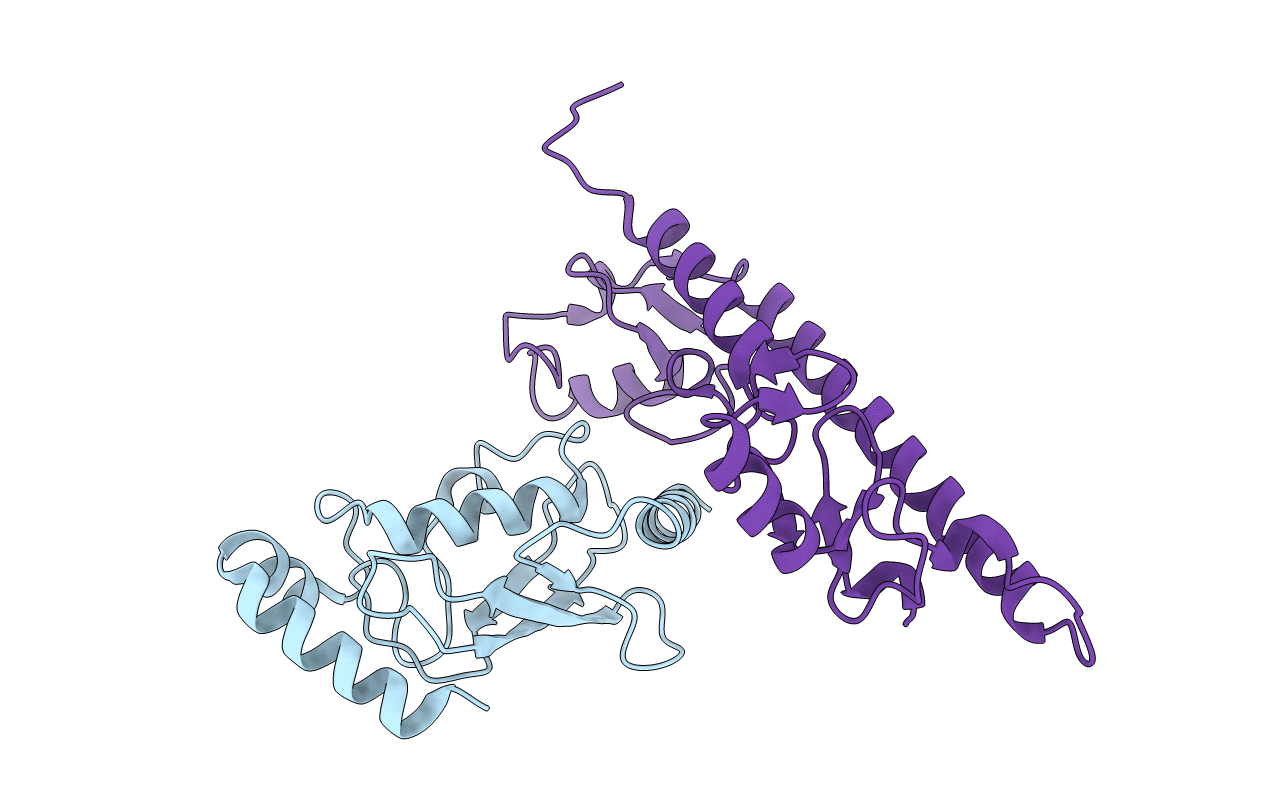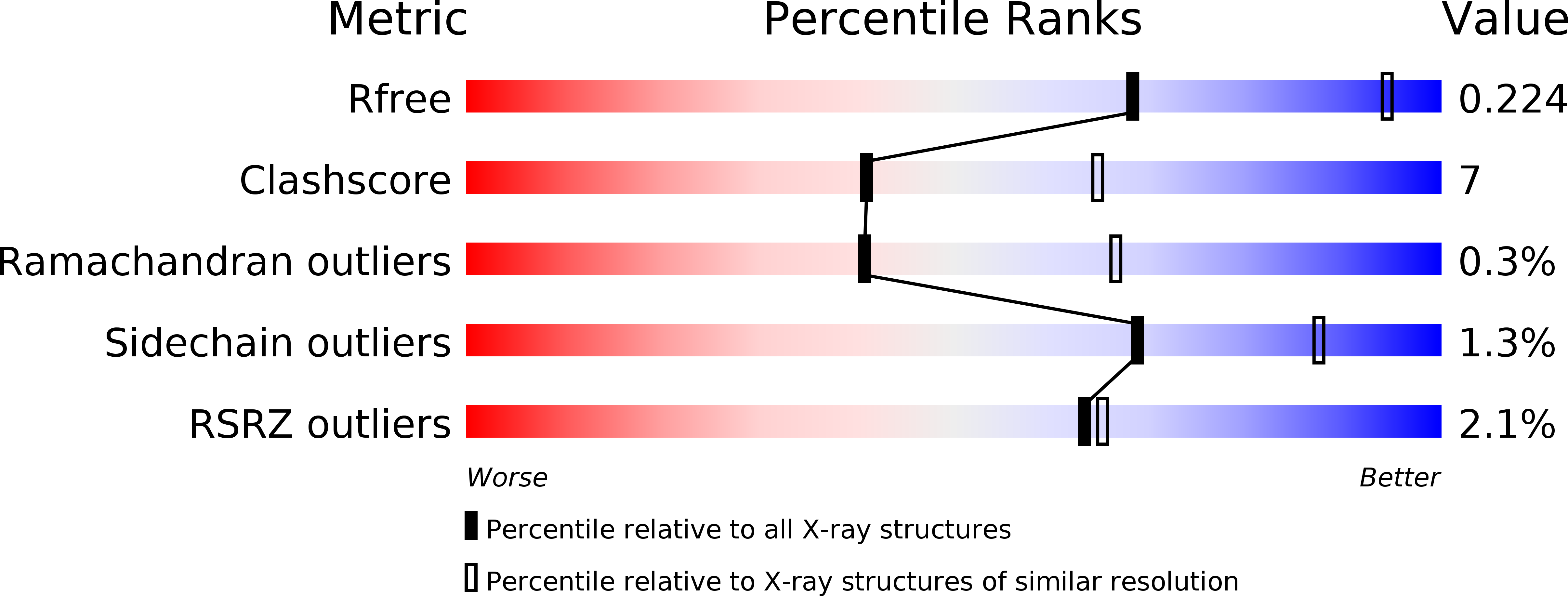
Deposition Date
2014-11-18
Release Date
2015-01-07
Last Version Date
2024-11-20
Entry Detail
PDB ID:
4WZ3
Keywords:
Title:
Crystal structure of the complex between LubX/LegU2/Lpp2887 U-box 1 and Homo sapiens UBE2D2
Biological Source:
Source Organism:
Homo sapiens (Taxon ID: 9606)
Legionella pneumophila (Taxon ID: 297246)
Legionella pneumophila (Taxon ID: 297246)
Host Organism:
Method Details:
Experimental Method:
Resolution:
2.70 Å
R-Value Free:
0.22
R-Value Work:
0.16
R-Value Observed:
0.16
Space Group:
P 61


